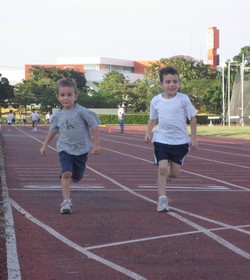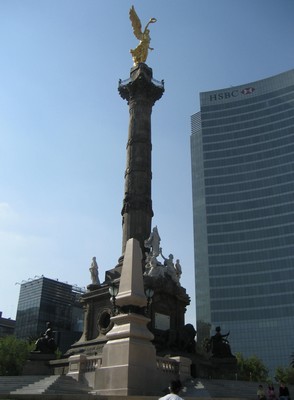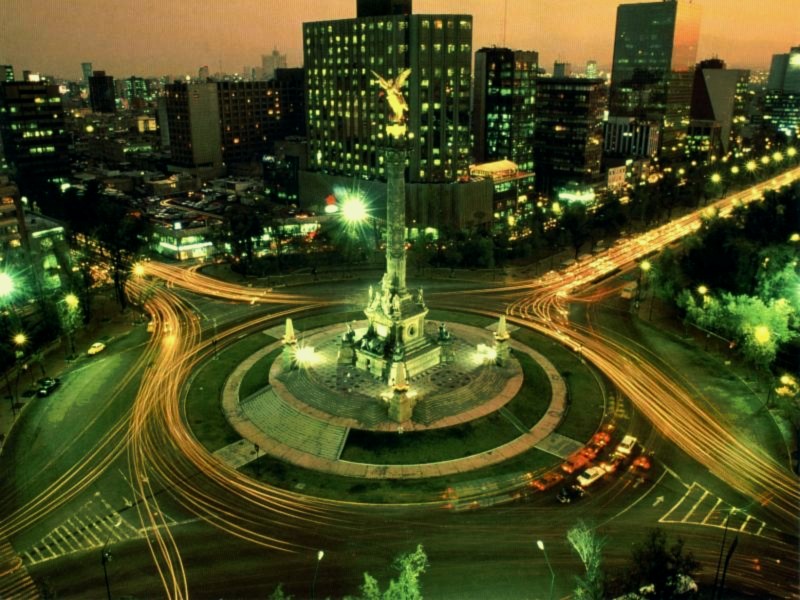 Looking out across the blog sphere, there are a lot of people currently writing about habits. My brother, Mike, is talking about his running and how that relates to keeping New Year’s Resolutions. Jim Cottrill, the host of missionary-blogs.com, himself a missionary to Mexico, is talking about Tim Horton’s and the coffee habit. With this “great cloud of witnesses,” writing, I too felt the inspiration to write about habits but not necessarily those habits that we see in our daily routine. Instead, I’d like to talk about those ways of thinking that routinely determine our attitudes and actions as we go about our daily lives.
Looking out across the blog sphere, there are a lot of people currently writing about habits. My brother, Mike, is talking about his running and how that relates to keeping New Year’s Resolutions. Jim Cottrill, the host of missionary-blogs.com, himself a missionary to Mexico, is talking about Tim Horton’s and the coffee habit. With this “great cloud of witnesses,” writing, I too felt the inspiration to write about habits but not necessarily those habits that we see in our daily routine. Instead, I’d like to talk about those ways of thinking that routinely determine our attitudes and actions as we go about our daily lives.
I tend toward an anal retentive personality, a tendency that has seemed to grow stronger over the years. One case in point: As we were decorating for Christmas, Kelly had purchased stockings for the kids. They were hung from our railing that leads to the upstairs bedrooms. (No need for a chimney here in Merida!) The railing has a design of bars and decoration along its span. When the stockings were hung, I noticed that we could use the design of the railing in order to space the three stockings evenly. For even spacing there was something like 5 bars between each stocking. So, I moved the stockings so that they would reflect this evenness. This of course prompted each of our children, partly to annoy and partly to exert their own sense of style, to rearrange the stockings themselves, resulting in a game that lasted until December 25th.
This tendency of mine also bleeds into other areas of my life. I tend to spend hours cleaning up the details in order to present a cleaner kitchen, a tidier garden or perhaps a more complete presentation. Still, although this attention to detail has its benefits, there are detriments as well. Like the despair that I can face when I lack the time or the resources to make everything come out the way I want, or perhaps the inertia that I have to contend with at the start of a project when I feel that my efforts might not be up to the task.
As a missionary as well, this habit of mine can cause far reaching problems: J Oswald Sanders, the author of the Book Spiritual Leadership reported that the leaders of one mission asked that their missionaries be more coaches than players, modeling and teaching rather than taking up front roles in the work. This kind of thinking is difficult for people like me to live out. Sometimes I find it hard just to let our children undertake a simple task like set the table. How much more difficult will it be for me to hand over a job with eternal consequences, especially if I feel that I am the most qualified to do it. I have heard others say that they’d never hand their work to a national believer. They have their reasons, some of them very good, but if we are truly to fulfill the Great Commission, do we have the luxury to hold on in this manner?
I think that Jesus can be a model for people like us. Himself perfect and surrounded by perfection, he decided to live here on earth with a group of 12 fishermen, zealots, and tax collectors who routinely failed to live up to his expectations. No one would have faulted him for abandoning this bunch at the first chance for some more promising candidates, but he pressed on with them–teaching, modeling, and giving them hands on experience in what it meant to work with God. The 120 in the upper room on Pentecost Sunday might have seemed to be a paltry showing for three years of arduous ministry, but these would prove to be the first-fruits of the church that would go on to affect the entire known world in the span of a generation. Could we hope to accomplish anything greater than this?
Habits. We try to create good ones and destroy bad ones. This New Year this missionary will be trying to conquer my perfectionism, my desire to be in control of the results, and dedicate myself, like Jesus to raising up men and women, disciples, that can carry on the work and in fact have a greater impact than I could ever imagine. Pray for me. I just added spell check to my website. It doesn’t seem to be a sign that this change will come easily.
 Kelly and I had a chance to escape the hustle and bustle of the everyday as we were looking for a birthday present for a local pastor’s wife. With the kids being watched by fellow missionaries and the present acquired, a stop at the local Segafredo Café gave us time to talk, plan, and enjoy one another for a while. Kelly ordered an Oreo Frappé, and I ordered my usual Espresso Macchiato. My recent sickness had kept me from heading out, and our stash of coffee at home was depleted, so expectations were high as we awaited our order. I’m happy to say that not only did the coffee meet our expectations, but that mine arrived with a smile.
Kelly and I had a chance to escape the hustle and bustle of the everyday as we were looking for a birthday present for a local pastor’s wife. With the kids being watched by fellow missionaries and the present acquired, a stop at the local Segafredo Café gave us time to talk, plan, and enjoy one another for a while. Kelly ordered an Oreo Frappé, and I ordered my usual Espresso Macchiato. My recent sickness had kept me from heading out, and our stash of coffee at home was depleted, so expectations were high as we awaited our order. I’m happy to say that not only did the coffee meet our expectations, but that mine arrived with a smile.
 I don’t dedicate much space to plugs on this site, although I could definitely spend some time talking about the great insight that I get reading the thoughts of others all across the net. However, there is one site that I just can’t afford not to mention. Seeing as how it’s run by the woman with whom I just happen to share my life.
I don’t dedicate much space to plugs on this site, although I could definitely spend some time talking about the great insight that I get reading the thoughts of others all across the net. However, there is one site that I just can’t afford not to mention. Seeing as how it’s run by the woman with whom I just happen to share my life. It’s very rare that a movie gives me pause for thought, but those that do usually keep me thinking for some time. That is what happened last night as we settled in to watch a library-borrowed copy of The Bicentennial Man. The film, starring Robin Williams, starts off as a whimsical story of the adjustments of one family to their android helper “Andrew.” However, it takes a dramatic turn into realm of the metaphysical when Andrew begins his quest become human. The interesting point of the movie is that the immortal, self-maintaining Andrew does what most would seem to think ridiculous. He decides to make himself mortal in order to truly share in the human existence and embrace those that he has not only served, but come to love.
It’s very rare that a movie gives me pause for thought, but those that do usually keep me thinking for some time. That is what happened last night as we settled in to watch a library-borrowed copy of The Bicentennial Man. The film, starring Robin Williams, starts off as a whimsical story of the adjustments of one family to their android helper “Andrew.” However, it takes a dramatic turn into realm of the metaphysical when Andrew begins his quest become human. The interesting point of the movie is that the immortal, self-maintaining Andrew does what most would seem to think ridiculous. He decides to make himself mortal in order to truly share in the human existence and embrace those that he has not only served, but come to love. I just wanted to send out a quick update to thank those who had prayed. As you might have read in our
I just wanted to send out a quick update to thank those who had prayed. As you might have read in our  “The City” in the U.S. is of course, New York City. It is one of the most important centers of commerce and culture in the country, and, who can forget, it is also home to the best team in baseball, the
“The City” in the U.S. is of course, New York City. It is one of the most important centers of commerce and culture in the country, and, who can forget, it is also home to the best team in baseball, the  We’ve certainly heard that line before. Whether we’ve used it or had someone use it on us, we know that something inappropriate had been said, something that didn’t fit in the conversation or context. Now, many of us would relate that unfortunate language to various four letter words that we may have heard throughout our lives, or perhaps to the childish giggles that accompany the use of “potty words” outside of their appropriate place, but today I’d like broaden the application of this phrase.
We’ve certainly heard that line before. Whether we’ve used it or had someone use it on us, we know that something inappropriate had been said, something that didn’t fit in the conversation or context. Now, many of us would relate that unfortunate language to various four letter words that we may have heard throughout our lives, or perhaps to the childish giggles that accompany the use of “potty words” outside of their appropriate place, but today I’d like broaden the application of this phrase. Looking out across the blog sphere, there are a lot of people currently writing about habits. My brother,
Looking out across the blog sphere, there are a lot of people currently writing about habits. My brother,  This year, the Godzwa family rang in the New Year a bit differently. No watching the ball drop in Times Square for us. We welcomed 2007 Mexican style. That meant of course there had to be fireworks, lots of them, and the traditional eating of the grapes.
This year, the Godzwa family rang in the New Year a bit differently. No watching the ball drop in Times Square for us. We welcomed 2007 Mexican style. That meant of course there had to be fireworks, lots of them, and the traditional eating of the grapes. It seems like the one thing that we can count on in life is that there will be change. We change from one year to the next, from one pant size to the next, and sometimes even from one car to the next. Our tastes change, our hobbies change and we find that those around us change as they too go through this same process. Well, things are no different for this missionary.
It seems like the one thing that we can count on in life is that there will be change. We change from one year to the next, from one pant size to the next, and sometimes even from one car to the next. Our tastes change, our hobbies change and we find that those around us change as they too go through this same process. Well, things are no different for this missionary. 



